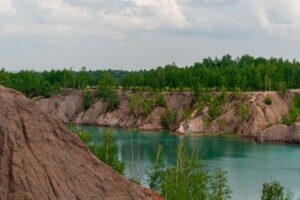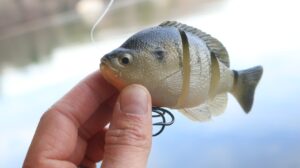Grass Rock Pokémon represent a unique and intriguing type combination within the expansive Pokémon universe. This dual-type classification merges the characteristics of Grass-type Pokémon, known for their connection to nature and healing abilities, with the robust and resilient traits of Rock-type Pokémon, which often exhibit high defense and physical strength. The fusion of these two types creates Pokémon that can harness the power of nature while also benefiting from the durability and stability associated with rock formations.
This combination not only influences their battle strategies but also shapes their roles in various ecosystems within the Pokémon world. The introduction of Grass Rock Pokémon has added depth to gameplay, allowing trainers to explore new strategies and team compositions. These Pokémon often embody themes of growth, resilience, and adaptability, reflecting the natural world’s ability to thrive in diverse environments.
As trainers delve into the mechanics of Grass Rock Pokémon, they discover a rich tapestry of abilities, moves, and synergies that can be leveraged in both casual play and competitive settings. Understanding these elements is crucial for any trainer looking to maximize their effectiveness in battles and tournaments.
Key Takeaways
- Grass Rock Pokemon are a unique type of Pokemon that combine the characteristics of both Grass and Rock types.
- They are known for their sturdy defense and powerful plant-based attacks, making them versatile in battles.
- Some of the best moves for Grass Rock Pokemon include Wood Hammer, Rock Slide, and Seed Bomb, which can be used strategically in battles.
- Training and evolving Grass Rock Pokemon requires a combination of leveling up and using specific evolution items or trading with other players.
- Some of the top Grass Rock Pokemon in the Pokemon universe include Cradily, Lileep, and Torterra, each with their own strengths and abilities.
Characteristics and Abilities of Grass Rock Pokemon
Grass Rock Pokémon exhibit a fascinating blend of characteristics that stem from their dual typing. The Grass-type aspect grants them access to a variety of moves that can inflict status conditions, heal themselves, or manipulate the battlefield through terrain effects. For instance, moves like Grassy Terrain not only boost the power of Grass-type moves but also restore a small amount of health to all grounded Pokémon each turn.
This ability to control the battlefield can be pivotal in turning the tide of a battle, especially when paired with other supportive moves. On the other hand, the Rock-type component provides these Pokémon with impressive physical defense and resistance to several types of attacks. Grass Rock Pokémon typically have high base stats in defense and special defense, making them formidable opponents who can withstand powerful hits.
Their resistance to Normal, Flying, Poison, Bug, Fire, and Fairy-type moves allows them to endure against a wide array of attackers. However, they are vulnerable to Fighting, Steel, Ice, Bug, Fire, and Fairy-type moves, which trainers must consider when strategizing their battles. This duality creates a dynamic where trainers must carefully select their moves and anticipate their opponents’ strategies.
Best Moves and Strategies for Grass Rock Pokemon in Battles

When it comes to battling with Grass Rock Pokémon, selecting the right moves is essential for maximizing their potential. One of the standout moves for this type combination is Stone Edge, a powerful Rock-type attack that boasts high critical-hit ratios. This move can deal significant damage to Flying, Bug, Fire, and Ice-type Pokémon, making it an excellent choice for countering common threats.
Additionally, Leaf Storm serves as a potent Grass-type move that can deliver substantial damage while also lowering the user’s Special Attack after use. This trade-off can be mitigated by pairing it with moves that boost Special Attack or by using items like Choice Specs. In terms of strategy, utilizing Grass Rock Pokémon as defensive pivots can be highly effective.
Their natural bulk allows them to absorb hits while setting up supportive moves like Stealth Rock or Spikes to control entry hazards on the battlefield. By placing these hazards strategically, trainers can chip away at opponents’ health as they switch in and out. Furthermore, moves like Synthesis or Leech Seed can provide sustainability during longer battles, allowing Grass Rock Pokémon to outlast their opponents while wearing them down over time.
Combining offensive capabilities with defensive strategies creates a well-rounded approach that can adapt to various battle scenarios.
Training and Evolving Grass Rock Pokemon
| Pokemon | Training Level | Evolution Method |
|---|---|---|
| Budew | Level up with high friendship during the day | Use a Shiny Stone |
| Roselia | Level up with high friendship during the day | N/A |
| Roserade | N/A | N/A |
| Cranidos | N/A | Level up to 30 |
| Rampardos | N/A | N/A |
Training Grass Rock Pokémon requires a nuanced understanding of their strengths and weaknesses. Focusing on their defensive capabilities is crucial; thus, investing in EVs (Effort Values) in Defense and Special Defense can enhance their survivability in battles. Trainers should also consider utilizing items such as Assault Vest or Leftovers to further bolster their defenses or provide passive healing during combat.
Additionally, breeding for optimal IVs (Individual Values) can ensure that these Pokémon reach their full potential in competitive play. Evolving Grass Rock Pokémon often involves specific conditions that trainers must meet. For example, certain species may require leveling up in particular locations or under specific environmental conditions.
Understanding these requirements is vital for trainers aiming to evolve their Pokémon into their more powerful forms. Moreover, some Grass Rock Pokémon may have access to unique abilities upon evolution that can significantly alter their battle dynamics. For instance, an evolved form might gain access to abilities like Solid Rock or Filter, which reduce damage taken from super-effective moves, further enhancing their role as defensive stalwarts.
Top Grass Rock Pokemon in the Pokemon Universe
Within the vast array of Grass Rock Pokémon available in the franchise, several stand out due to their unique abilities and competitive viability. One notable example is Cradily, a Pokémon known for its exceptional bulk and access to a diverse movepool. Cradily’s ability to utilize moves like Giga Drain for recovery while setting up entry hazards makes it a formidable opponent in both singles and doubles formats.
Its unique typing allows it to counter many common threats while providing valuable support to its team. Another prominent Grass Rock Pokémon is Torterra, which combines offensive prowess with solid defensive capabilities. Torterra’s access to powerful moves like Earthquake and Wood Hammer allows it to deal significant damage while also benefiting from its ability Overgrow, which boosts its Grass-type moves when its health is low.
This combination makes Torterra a versatile choice for trainers looking to balance offense and defense within their team composition. Each of these Pokémon showcases the potential of the Grass Rock typing and highlights the diversity available within this category.
Using Grass Rock Pokemon in Gym Battles and Tournaments

Advantages in Gym Battles
Their ability to withstand hits while dealing substantial damage makes them ideal candidates for taking on gym leaders who may rely on specific types of Pokémon. For instance, when facing a Water-type gym leader, deploying a Grass Rock Pokémon can provide an advantage by resisting Water-type attacks while retaliating with powerful Grass-type moves.
Effective Utilization in Tournaments
In tournament settings, understanding the metagame is crucial for effectively utilizing Grass Rock Pokémon. Trainers must be aware of prevalent threats within the competitive landscape and adjust their strategies accordingly. For example, if Steel-type Pokémon are common in the current meta, trainers might prioritize moves that exploit their weaknesses or consider pairing their Grass Rock Pokémon with teammates that can handle those threats effectively.
Adaptability in Team Compositions
The adaptability of Grass Rock Pokémon allows them to fit into various team compositions while providing unique advantages against specific opponents.
Building a Strong Team with Grass Rock Pokemon
Constructing a well-rounded team featuring Grass Rock Pokémon involves careful consideration of type synergy and coverage options. Trainers should aim to complement their Grass Rock Pokémon with teammates that can cover its weaknesses while enhancing its strengths. For instance, pairing a Grass Rock Pokémon with Water or Fairy-types can help mitigate vulnerabilities against Fire or Fighting-type moves.
Additionally, including Pokémon that can set up entry hazards or provide status support can create opportunities for the Grass Rock Pokémon to shine. Moreover, incorporating diverse roles within the team is essential for maintaining flexibility during battles. A balanced team might include offensive threats alongside defensive pivots and support roles that can heal or provide buffs.
This diversity ensures that trainers have options available for various battle scenarios while maximizing the effectiveness of their Grass Rock Pokémon. By fostering synergy among team members and understanding each Pokémon’s role within the group, trainers can create a cohesive unit capable of tackling any challenge.
Tips for Mastering Grass Rock Pokemon in the Game
To master Grass Rock Pokémon effectively in gameplay requires a combination of strategic planning and practical experience. One key tip is to familiarize oneself with the strengths and weaknesses of this type combination thoroughly. Understanding which types are resistant or vulnerable allows trainers to make informed decisions during battles and anticipate opponents’ strategies more effectively.
Additionally, practicing different battle scenarios can help trainers refine their tactics when using Grass Rock Pokémon. Engaging in both casual battles and competitive matches provides valuable insights into how these Pokémon perform under various conditions. Experimenting with different move sets and team compositions will enable trainers to discover optimal strategies tailored to their playstyle.
Furthermore, staying updated on changes within the metagame is crucial for maintaining competitiveness with Grass Rock Pokémon. As new games are released and balance patches are implemented, understanding how these changes affect type dynamics will allow trainers to adapt their strategies accordingly. By continuously learning and evolving alongside the game’s mechanics, trainers can ensure they are always prepared to leverage the unique strengths of Grass Rock Pokémon effectively.
In conclusion, mastering Grass Rock Pokémon involves understanding their unique characteristics, developing effective strategies for battles, training them appropriately for evolution, and building strong teams that capitalize on their strengths while mitigating weaknesses. With dedication and practice, trainers can unlock the full potential of these fascinating creatures within the expansive world of Pokémon.
If you’re interested in learning more about the world of grass rock Pokemon, you may also enjoy reading The Comprehensive Guide to Becoming a Structural Engineer. This article delves into the career opportunities and educational requirements for those interested in pursuing a career in structural engineering. Just like training and evolving your grass rock Pokemon, becoming a structural engineer requires dedication, hard work, and a passion for the field.
FAQs
What are Grass-type Pokémon?
Grass-type Pokémon are creatures in the Pokémon series that are primarily associated with plants and nature. They are often depicted with green coloring and are known for their abilities to manipulate plants and use grass-based attacks.
What are Rock-type Pokémon?
Rock-type Pokémon are creatures in the Pokémon series that are primarily associated with rocks, minerals, and earth. They are often depicted with rocky or stony appearances and are known for their defensive capabilities and rock-based attacks.
What are Grass/Rock-type Pokémon?
Grass/Rock-type Pokémon are a combination of both Grass and Rock types. They possess characteristics and abilities of both types, making them resistant to certain types of attacks and vulnerable to others.
What are some examples of Grass/Rock-type Pokémon?
Some examples of Grass/Rock-type Pokémon include Lileep, Cradily, and Torterra. These Pokémon are known for their unique combination of grass and rock-based abilities.
What are the strengths and weaknesses of Grass/Rock-type Pokémon?
Grass/Rock-type Pokémon are resistant to Electric, Ground, and Water-type attacks, but they are vulnerable to Fighting, Ice, Steel, and Bug-type attacks. Their dual typing gives them a unique set of strengths and weaknesses in battles.
























+ There are no comments
Add yours